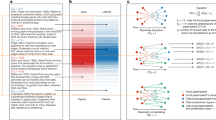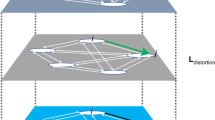Abstract
This communication provides an easy-to-follow protocol for using the free Internet-accessible scientific search engine, Scirus, to search for and subsequently retrieve published patents from several patent offices in portable document format (PDF). Hints on how to 'read' patents and how to extract relevant information, as well as how to export bibliographic data from Scirus and how to cite patents, are also given. The reason for providing such a protocol is that a vast amount of information, also of potential interest to life scientists, is largely hidden for those not knowing how to access these data. Several examples are provided that highlight the reasons to include patent searches into the workflow of life scientists. These include early access to data before publication, patents as a source of data that never appear in the literature and patents as a source of critical information otherwise hard to get from commercial suppliers. Finally, alternative free patent search services are briefly discussed, and their differences are highlighted.
This is a preview of subscription content, access via your institution
Access options
Subscribe to this journal
Receive 12 print issues and online access
$259.00 per year
only $21.58 per issue
Buy this article
- Purchase on Springer Link
- Instant access to full article PDF
Prices may be subject to local taxes which are calculated during checkout











Similar content being viewed by others
References
Loet, L. The university-industry knowledge relationship: analyzing patents and the science base of technologies. J. Am. Soc. Inform. Sci. Tech. 55, 991–1001 (2004).
McMillan, G.S., Narin, F. & Deeds, D.L. An analysis of the critical role of public science in innovation: the case of biotechnology. Res. Pol. 29, 1–8 (2000).
Verbeek, A. et al. Linking science to technology: using bibliographic references in patents to build linkage schemes. Scientometrics 54, 399–420 (2002).
Glänzel, W. & Meyer, M. Patents cited in the scientific literature: an exploratory study of 'reverse' citation relations. Scientometrics 58, 415–428 (2003).
Blossey, R. Read patents, not just papers. Nat. Mater. 1, 199–201 (2002).
Thangaraj, H. Information from patent office could aid replication. Nature 447, 638 (2007).
Giustini, D. & Barsky, E. A look at Google Scholar, PubMed, and Scirus: comparisons and recommendations. J. Can. Health Libr. Assoc. 26, 85–89 (2005).
MacMillan, D. Patently obvious: the place for patents in information literacy in the sciences. Res. Strat. 20, 149–161 (2006).
Zeytun, A., Jeromin, A., Scalettar, B.A., Waldo, G.S. & Bradbury, A.R. Retraction. Fluorobodies combine GFP fluorescence with the binding characteristics of antibodies. Nat. Biotechnol. 22, 601 (2004).
Bradbury, A., Zeytun, A. & Waldo, G. Fluorobodies and chromobodies: binding ligands with intrinsic fluorescence and color. PCT Patent Application WO03091415, filed 24 Apr. 2003, and published 6 Nov. 2003.
Jensen, L.J., Saric, J. & Bork, P. Literature mining for the biologist: from information retrieval to biological discovery. Nat. Rev. Genet. 7, 119–129 (2006).
Seeber, F., Aliverti, A. & Zanetti, G. The plant-type ferredoxin-NADP+ reductase/ferredoxin redox system as a possible drug target against apicomplexan human parasites. Curr. Pharm. Des. 11, 3159–3172 (2005).
Jones, S.M. et al. Analogues of thiolactomycin as potential anti-malarial and anti-trypanosomal agents. Bioorg. Med. Chem. 12, 683–692 (2004).
Berry, C. & Harwood, J.L. Compounds and compositions for use in inhibiting endoparasitic fatty acid biosynthesis. PCT patent WO0149278, filed 8 Jan. 2001, and issued 12 Jul. 2001.
Blattner, F.R., Posfai, G., Herring, C.D., Plunkett, G. & Glasner, J.D. Bacteria with reduced genome. US patent 6989265, filed 23 Jan. 2002, and issued 24 Jan. 2006.
Blattner, F.R. et al. Bacteria with reduced genome. US Patent Application US2003138937, filed 23 Jan. 2002, and published 24 Jul. 2003.
Blattner, F.R. et al. Competent bacteria. US Patent Application US20050032225, filed 5 Sep. 2003, and published 10 Feb. 2005.
Pósfai, G. et al. Emergent properties of reduced-genome Escherichia coli. Science 312, 1044–1046 (2006).
Wagner, O. et al. Herbicidal compositions and processes based on ferredoxin:NADP reductase inhibitors. US Patent US6124242, filed 21 Jun. 1999, and issued 26 Sep. 2000.
Nakamura, S., Sakaguchi, Y., Kashimoto, S. & Matsumoto, S. Prevention or elimination of mycoplasma contamination of animal or plant cell cultures. US patent US5051419, filed 27 Jun. 1989, and issued 24 Sep. 1991.
O'Brien, J., Wilson, I., Orton, T. & Pognan, F. Investigation of the Alamar Blue (resazurin) fluorescent dye for the assessment of mammalian cell cytotoxicity. Eur. J. Biochem. 267, 5421–5426 (2000).
Yang-Boja, E., DeFilippes, F. & Fales, H.M. Electrospray mass spectra of three proprietary detergents. Anal. Biochem. 285, 205–210 (2000).
Acknowledgements
Own work cited by the author was supported by grants from the Deutsche Forschungsgemeinschaft.
Author information
Authors and Affiliations
Corresponding author
Rights and permissions
About this article
Cite this article
Seeber, F. Patent searches as a complement to literature searches in the life sciences—a 'how-to' tutorial. Nat Protoc 2, 2418–2428 (2007). https://doi.org/10.1038/nprot.2007.355
Published:
Issue Date:
DOI: https://doi.org/10.1038/nprot.2007.355
This article is cited by
-
Gaps in awareness and control of hypertension: a cross-sectional study in Chinese urban adults
Journal of Human Hypertension (2018)
-
The evolution of large-scale dimensional metrology from the perspective of scientific articles and patents
The International Journal of Advanced Manufacturing Technology (2014)
Comments
By submitting a comment you agree to abide by our Terms and Community Guidelines. If you find something abusive or that does not comply with our terms or guidelines please flag it as inappropriate.



